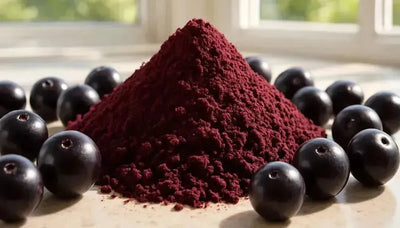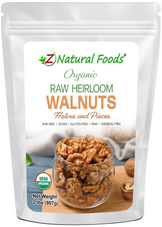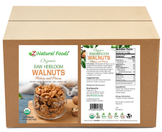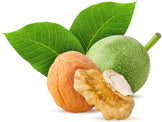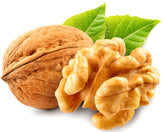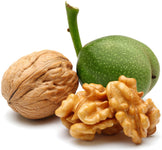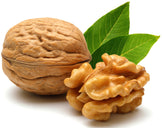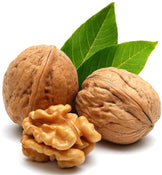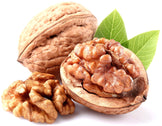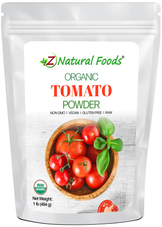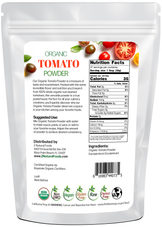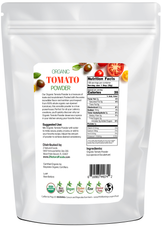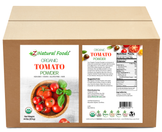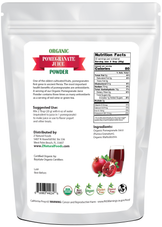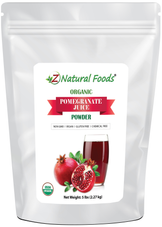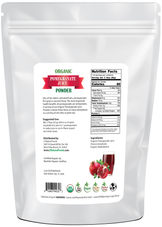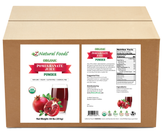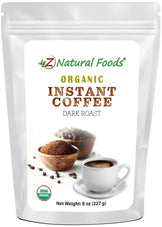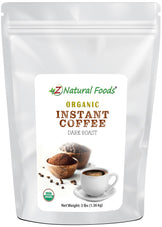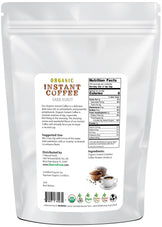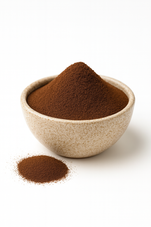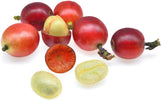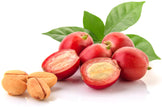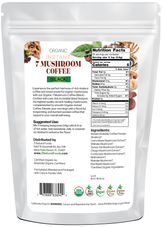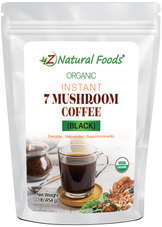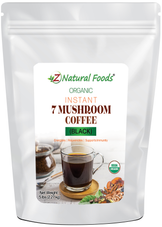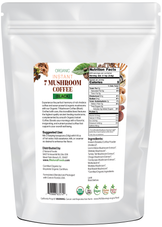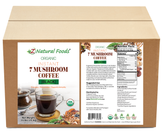Description
Description
Walnuts are a cherished part of the Mediterranean lifestyle and have a rich history that spans centuries.
These are not just any “nuts” but a culinary treasure that has been passed down through generations. Whether enjoyed as a standalone snack or skillfully incorporated into your favorite Mediterranean recipe, these delightful and nourishing treats will cater to your discerning palate and elevate your culinary experience to new heights.
While the Mediterranean lifestyle has several variabilities regarding protein sources based on geographic location, there is a list of foods that all versions of the Mediterranean lifestyle consider essential for daily consumption.
These include red wine, olive oil, coffee, local herbal teas and honey, locally-grown produce, and nuts/seeds.
Within the nuts and seeds category, walnuts seem to stand above the rest. A 1-ounce serving of walnuts contains about 185 calories and 4 grams of protein and is a good source of vitamins and minerals such as vitamin E, magnesium, and phosphorus. But these savory seeds offer so much more.
An assay that measures the total concentration of active compounds concluded that the top 50 foods with the highest levels of active antioxidants were “Based on typical serving sizes, blackberries, walnuts, strawberries, artichokes, cranberries, brewed coffee, raspberries, pecans, blueberries, ground cloves, grape juice, and unsweetened baking chocolate were at the top of the ranked list.”
Walnuts, often considered nuts in the culinary world, are actually seeds. Botanically, they are the seeds of drupes. In technical terms, a nut is a simple dry fruit with one seed in which the ovary wall becomes increasingly hard as the fruit matures and the seed remains unattached within the ovary wall.
A drupe, also known as a stone fruit, has an outer fleshy part surrounding the shell with an edible seed inside. This unique botanical classification adds to the intrigue and curiosity about walnuts.
Three reasons why walnuts are a staple in the Mediterranean Diet
So, today, we invite you to rediscover all of the unique and spectacular attributes of the walnut as we give you the top three reasons why walnuts are a staple in the Mediterranean lifestyle.
1) Walnuts have an excellent macronutrient profile
Walnuts are a quality source of protein, providing four grams per ounce (for comparison, beef is, on average, 7 grams per ounce).
However, like most plant-based protein sources, walnuts are an incomplete protein. Our comprehensive protein articles have delved into the definition of a complete protein. It was once believed that a complete protein is a food that simply contained all nine essential amino acids. Modern research has enlightened us that the need for these essential amino acids to be in sufficient and consistent amounts is equally crucial in defining a complete protein. Therefore, a food can be considered an incomplete protein if one or more essential amino acids are lacking, even if all nine EAAs are present. Insufficiency is determined in the above case through the amino acid score. The score is calculated by dividing the content of individual EAAs in food protein by the same amino acid content in the reference pattern.
However, when it comes to the body's need to create muscle and enzyme proteins, it's all about having all nine essential amino acids present. The end result is the same whether the protein comes from a single source of complete protein, like egg and whey, or a combination of sources, like plant proteins. The good news is that pairing walnuts with another well-balanced protein source is simpler than you might think. Combining walnuts with beans (another star of the Mediterranean lifestyle) will provide your body with all the necessary ingredients for creating muscle and enzyme proteins.
A delectable walnut and three-bean salad drizzled with extra virgin olive oil, a squeeze of lemon, and a sprinkle of salt and pepper is a perfect and flavorful way to achieve this goal.
Walnuts' are also an outstanding source of essential fatty acids and are said to have the best profile of all nuts and seeds. There are two primary types of fats: saturated and unsaturated. Structurally speaking, saturated fats have no double bonds, whereas unsaturated fats have one or more of these bonds. A fat with one double bond is considered monounsaturated, whereas if it has more than one, it is polyunsaturated. Polyunsaturated fats are broken down into two classes: Omega-3 and 6 fatty acids. An important point to understand is that while specific foods may be higher in a particular type of fat, all foods contain a mixture of saturated, mono, and polyunsaturated fats.
Like most other “nuts,” or in this case, seeds, walnuts contain the majority of their calories from fat, making them energy-dense, high-calorie foods. Walnuts are a great source and are higher than most seeds in polyunsaturated fatty acids, the most abundant one being omega-6 linoleic acid. However, around 12% of walnuts' fatty acid profile comes from the Omega-3 fatty acid Alpha linoleic acid (ALA), making walnuts a well-balanced omega fatty acid food.
The following was stated in a study discussing dietary ALA's effects on reducing the cardiovascular risk factors of inflammation and lipid profile imbalances in hypercholesterolemic men and women:
- Alpha-linolenic acid (ALA) reduces cardiovascular disease (CVD) risk, possibly by favorably changing vascular inflammation and endothelial dysfunction.
- Inflammatory markers and lipids and lipoproteins were assessed in hypercholesterolemic subjects (n = 23) fed two diets low in saturated fat and cholesterol and high in PUFA varying in ALA (ALA Diet) and linoleic acid (LA Diet) compared with an average American diet (AAD).
- The ALA Diet provided 17% energy from PUFA (10.5% LA; 6.5% ALA); the LA Diet provided 16.4% energy from PUFA (12.6% LA; 3.6% ALA); and the AAD provided 8.7% energy from PUFA (7.7% LA; 0.8% ALA).
- The ALA Diet decreased C-reactive protein (CRP, P < 0.01), whereas the LA Diet tended to decrease CRP (P = 0.08).
- Although the two high-PUFA diets similarly decreased intercellular cell adhesion molecule-1 vs. AAD (-19.1% by the ALA Diet, P < 0.01; -11.0% by the LA Diet, P < 0.01), the ALA Diet decreased vascular cell adhesion molecule-1 (VCAM-1, -15.6% vs. -3.1%, P < 0.01) and E-selectin (-14.6% vs. -8.1%, P < 0.01) more than the LA Diet.
- Changes in CRP and VCAM-1 were inversely associated with changes in serum eicosapentaenoic acid (EPA) (r = -0.496, P = 0.016; r = -0.418, P = 0.047) or EPA plus docosapentaenoic acid (r = -0.409, P = 0.053; r = -0.357, P = 0.091) after subjects consumed the ALA Diet.
- The two high-PUFA diets decreased serum total cholesterol, LDL cholesterol, and triglycerides similarly (P < 0.05); the ALA Diet decreased HDL cholesterol and apolipoprotein AI compared with the AAD (P < 0.05).
Therefore, it was concluded that “ALA appears to decrease CVD risk by inhibiting vascular inflammation and endothelial activation beyond its lipid-lowering effects.”
For an excellent article that reviews some popular plant protein vs whey, go here:
2) The Variety and Versatility of Walnuts speak for themselves
Your food choices ' versatility is critical for adhering to a healthy lifestyle. Walnuts are a highly versatile food offering a wide variety and unique spectrum of walnut flavors from earthy and mild to robust with a slightly sweet finish. For example, the Eureka variety has a wonderfully robust walnut flavor without bitter undertones, making it a favorite among walnut growers. This unique spectrum of flavors can recreate and bring new life to a food or recipe. Therefore, chefs and bakers worldwide agree that pairing the correct walnuts for specific purposes is essential to getting the most out of your food and recipe experience.
While there are more than 30 varieties of commercially produced walnuts, some of the most common are Chandler, Hartley, and Howards. Some older but still popular varieties like Sers, Franquetts, and Vina are to be remembered for their contribution to the flavor and versatility game. You may be wondering why so many varieties are produced. The purpose of creating so many varieties is to produce a walnut with greater vigor(referring to its growth habits) and the ability to resist disease and overcome environmental issues.
As stated above, proper pairing is critical to getting the most out of your walnuts. Therefore, looking at flavors, undertones, and size is crucial for optimal results. Generally speaking, walnuts offer light and darker amber tones, each providing its unique flavor profile. Light walnuts have greater stability, a mild flavor, and an earthy undertone due to higher tannin levels. However, the slightly darker amber walnuts have a more robust flavor and sweeter finish.
Yes, it is true; size matters, especially when looking for the best texture for your recipe. Grinding walnuts into a fine meal and adding them to a smoothie can create a creamier texture. When adding to soups, leaving the walnuts whole can provide greater texture and contrast to the eating experience. However, salads contain more texture, so smaller walnut pieces (chopped) are more appropriate to keep the texture profile in balance.
And speaking of proper pairing, pomegranates are also considered superstars in the MD lifestyle, so combining them with walnuts packs a nourishing culinary punch. It is well known that opposites can attract, and from a culinary perspective, the flavors of walnuts and pomegranates complement each other quite well. The acidic sweetness of pomegranates is a perfect complement to walnuts' astringent and oily flavor. They are also both rich in the family of the polyphenolic compound ellagitannins.
Punicalagin is an ellagitannin (a polyphenol not absorbed into the bloodstream but instead hydrolyzed into ellagic acid) found in the peel of a pomegranate. This powerful compound has potentially proven antioxidant, hepatoprotective, and anti-atherosclerotic nourishing traits. It has also been shown to inhibit inflammatory pathways on the action of toxic substances and is highly tolerated. One of the primary and most impressive things pomegranates have been studied for is their ability to protect aging arteries and possibly reverse endothelial dysfunction. In this condition, the large blood vessels in the heart’s surface constrict instead of dilate.
3) Walnuts contain a treasure trove of quality nourishment
Polyphenols are a term used to describe a general category of compounds found in a broad spectrum of fruits, vegetables, and tea that work as “reducing agents” along with other compounds known as antioxidants to support a healthy inflammation response and the body's ability to protect and repair damaged tissue caused by oxidative stress. While over 8,000 polyphenols have been identified, some of the most common are flavonoids, flavonols, and anthocyanins.
The importance of discussing these various compounds allows you to more clearly understand the wide range and complexity of nourishment you are getting from these powerful foods.
In a paper discussing free and total polyphenols in nine types of raw and roasted nuts, it was stated that not only did walnuts have the highest free and total polyphenols, but “walnut polyphenols had the best efficacy among the nuts and also the highest lipoprotein-bound antioxidant activity.” Based on USDA availability data, the per capita total polyphenols was 162 mg from nuts per day in 2008. This corresponds to 19% of the total polyphenols from fruits and vegetables, nuts, grains, oils, and spices in the US diet. Nuts provided 158 mg of polyphenols per day to the European Union diet.
Finally, the following was stated in a review discussing the health benefits of polyphenols in walnuts: “The main polyphenol in walnuts is pedunculagin, an ellagitannin. After consumption, ellagitannins are hydrolyzed to release ellagic acid, which is converted by gut microflora to urolithin A and other derivatives such as urolithins B, C, and D. Ellagitannins possess well-known antioxidant and anti-inflammatory bioactivity, and several studies have assessed the potential role of ellagitannins against disease.”
In conclusion, walnuts bring many unique attributes to the world-renowned Mediterranean lifestyle, including nutrient density, versatility, flavor profiles, and a well-balanced essential fatty acid profile.
This food is also a big superstar in the world of healthy aging, as it was found that those in their 60s who consumed five or more servings of walnuts weekly had a lower risk of total and CVD mortality and a greater life expectancy increase. As a matter of fact, the US National Library of Medicine database contains approximately 35 peer-reviewed published papers supporting a claim that ingesting walnuts improves vascular health and may reduce heart attack risk.
It is clear the value that these power-packed seeds bring to the Mediterranean lifestyle table.
So, get cracking and make walnuts a part of your daily nourishment.
For more information about our Organic, Raw, Heirloom Walnuts, go here for our product description:
To review all of our Nuts & Seeds, go here:
